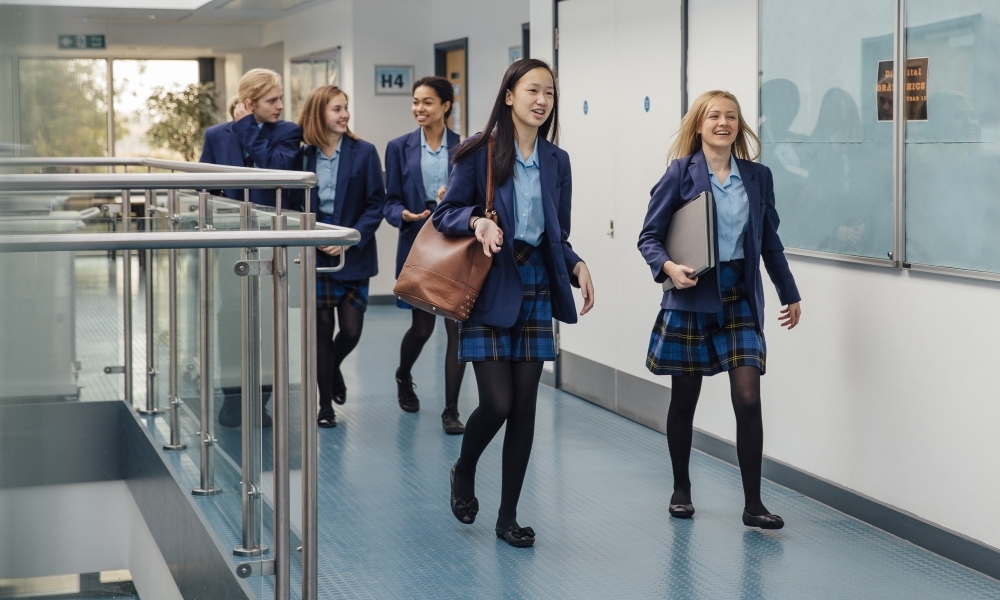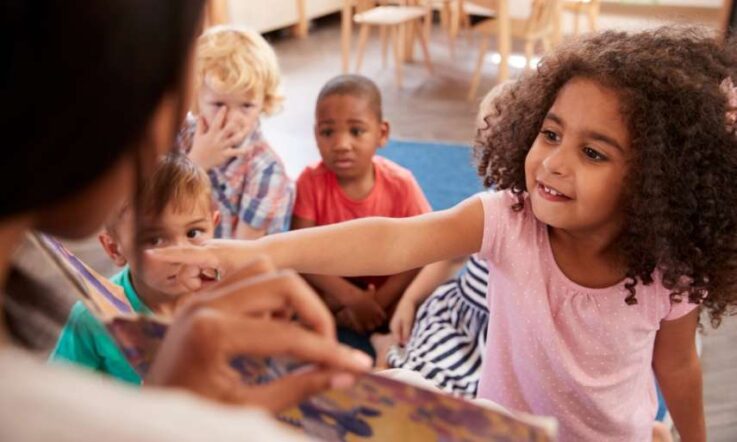During 2020, school-aged children had to undergo a lesson in forced adaptability – completing a school year in isolation during COVID-19, relying on months of digital and social interactions, and shifting means of learning to the online world.
While we found that a lot of elements in our lives can be replaced by an online substitute, after a year of lockdowns we still have not been able to replicate the ‘human’ element.
The lack of peer-to-peer interaction was perhaps felt most by children. From seeing peers at school every day in a face-to-face environment, to being limited to two dimensions. Unfortunately, collaboration became collateral damage in the quest to ensuring school curriculum was delivered, and physical health maintained.
We know that interaction with peers is essential to child development (Pachucki, 2013; Thomson, 2019). A year of transitioning in and out of remote learning has decimated a child’s resilience, and for some their development stalled or became stagnant (de Figueiredo et al., 2021). As Australia reopens and some sort of normality resumes, what can be done to empower children to thrive?
Peer-led support programs
While there is no silver bullet solution, peer-led support programs can help to rebuild resilience, which is paramount to early development.
To help review the efficacy of Peer Support Australia’s (PSA) evidence-based programs in their 50th year of service, Deakin University’s Centre for Social and Early Emotional Development (SEED) prepared the Promoting positive youth development in schools: A program logic analysis of Peer Support Australia report.
Its findings are a timely reminder of the holistic model that peer support programs can offer to improve the overall wellbeing of school-aged children. Studies show peer support programs have been developed and implemented internationally as a method of supporting healthy development and youth mental health (Day et al., 2020). In the context of lost development during COVID-19, models like this are vital.
PSA’s mission is ‘to work with school communities, placing students at the centre of their learning, empowering them with wellbeing skills and strategies to navigate life’. Its activities include: consultations with schools; talks to staff, students and parents; teacher workshops; and, leadership training for teachers to train students.
PSA’s mission is implemented through a framework that communicates with and integrates every facet of a student’s life – parents, teachers and peers. By providing teacher workshops and involving parents at the start of the process, a shared language is formed to enable student voices to be heard and understood and create two-way communication. The resulting clarity of wants and needs is harnessed, and places students at the centre of their own learning, allowing for greater critical thinking and increased social skills.
There is increasing interest in implementing peer support programs to improve student wellbeing as educators begin to acknowledge the potential benefits.
The roles that teachers and parents play in a child’s social and emotional development cannot be diminished. By combining these roles with student-based programs, students can receive an all-inclusive approach which empowers young people to draw and build on the skills that will help them navigate through life.
The growing presence, use of, and anxieties that come with social media among school-aged children highlight the critical need for young people to possess the emotional intelligence and skillset required to enjoy a full childhood. Programs that are proven to work, such as those developed by PSA, help children to build the skills they require to overcome such challenges.
Leading and learning from each other
Previous studies have found that health and social benefits become more noticeable when peer support programs are clearly structured (Petosa & Smith, 2014). So, while students being back in the classroom and interacting with their peers again is important for their social development, structured programs can help accelerate the restoration of resilience and wellbeing.
The benefits are two-fold; students delivering the programs build vital leadership skills, while participants of the programs benefit from anecdotal lessons of early life. Previous studies suggest school adjustment programs had significant benefits in positive youth development for both Year 7 program participants, and participating Year 11 and 12 student leaders (Ellis, 2004; 2009).
While we are still learning about the effects that a year of disruption in learning and social development will have on students, placing a priority on developing programs that allow students to lead and learn from each other will have an immense impact on their overall wellbeing and resilience.
References and related reading
Cantwell, G., Blackburn, S., Pearman, J., Berlage, M., Sedgwick, S., Clancy, E., Rowland, B., Klettke, B., & Toumbourou, J. W. (2020). Promoting positive youth development in schools: A program logic analysis of Peer Support Australia. Prepared for Peer Support Australia by the Consulting Team, Centre for Social and Early Emotional Development (SEED). Deakin University.
Day, L., Campbell-Jack, D., & Bertolotto, E. (2020) Evaluation of the Peer Support for Mental Health and Wellbeing Pilots. UK Department for Education Research Report completed by Ecorys (UK). London, UK: Department for Education. https://www.gov.uk/government/publications/peer-support-for-mental-health-pilots-an-evaluation
de Figueiredo, C. S., Sandre, P. C., Portugal, L. C. L., Mázala-de-Oliveira, T., da Silva Chagas, L., Raony, Í., Ferreira, E.S., Giestal-de-Araujo, E., dos Santos, A.A., Bomfim, P.O.-S. (2021). COVID-19 pandemic impact on children and adolescents' mental health: Biological, environmental, and social factors. Progress in Neuro-Psychopharmacology and Biological Psychiatry, 106, 110171. https://www.ncbi.nlm.nih.gov/pmc/articles/PMC7657035/
Ellis, L.A. (2004) Peers helping peers: The effectiveness of a peer support program in enhancing self-concept and other desirable outcomes. Doctor of Philosophy Thesis. School of Psychology, University of Western.
Ellis, L., Marsh, H. and Craven, R. (2009) Addressing the challenges faced by early adolescents: a mixed method evaluation of the benefits of peer support. American Journal of Community Psychology. 44(1-2), 54-75. https://doi.org/10.1007/s10464-009-9251-y
Pachucki, D. (2013, August 2) The Effects of Peers on Child Development. How to Adult. https://howtoadult.com/effects-peers-child-development-10740.html
Petosa, R.L., & Smith, L.H. (2014). Peer mentoring for health behavior change: A systematic review. American Journal of Health Education, 45, 351-357.
Thomson, S. (2019, March 18). Feeling safe at school – what does the research say? Teacher magazine. https://www.teachermagazine.com/au_en/articles/feeling-safe-at-school-what-does-the-research-say
Thinking about your own school context: There have been significant changes to school education and social interaction as a result of COVID-19. What impact has this had on your students? Have you asked them about their needs and where they would like additional support? As a leader, how could you integrate a peer support element into your school-wide response?



